INITIAL THOUGHTS:
Drawing, interaction, music, performance, abstraction, and installation. Enhancing the drawing process with collaborative interactivity through programming.
LOOKING FOR MORE:
I want to create something on the interactivities between real-time drawing and computation. Ron Hul introduced his animation “Ode to Summer” a few years back, a 3D animation of a Chinese girl reading poetry in a lotus garden rendered in never before seen Chinese Calligraphy style. It is the three-dimensional quality of lively two-dimensional brush strokes in this animation fascinates me. In 2005, Play Station 2 has released a beautifully rendered game called Okami in a similar style. Besides the rendering, the player can actually pause the game and use the analog stick to draw Chinese calligraphy that will turn into a spell or do something special to the game. Recently, Golan Levin and Zachary Lieberman’s collaboration “messa di voce” and Zachary’s own project “Drawing” are also perfect examples of creating interaction with drawings. I want to do eventually is actually an Intermedia of all that was mentioned above, a mixture of real-time drawing, interactivity, gaming, and performance.
PAPER PROTOTYPING:
The first paper prototype consists of one Initiator (Painter), one Reactor (Computer), two bold sharpies, a reference card, and a blank white poster. The Reactor is role-played by a human tester with a reference card – a sheet of rules/computer logic that determines what to add to the drawing.
There is no oral communication allowed between the two. The Initiator will start to draw on the poster. I encouraged big and bold strokes since it is on a white poster, but whatever gets the Initiator to start drawing. The Reactor reacts to the Initiator’s strokes and starts to add to them based on the reference card. The Reactor can rotate, rescale, multiply, overlay and break apart the graphic elements on the reference card in order to match Initiator’s drawing.

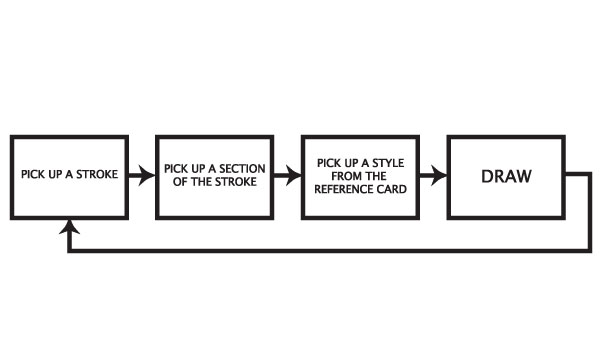
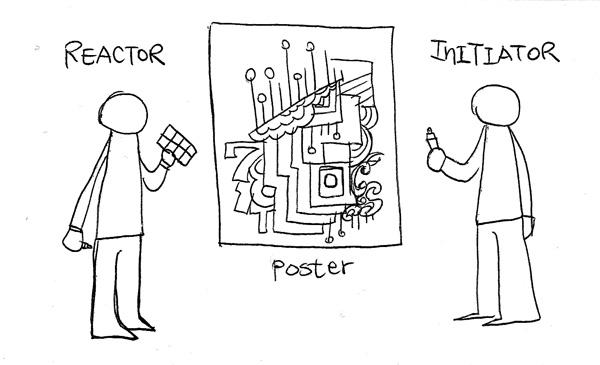
FEEDBACK ON THE PROTOTYPE:
- In the first few tests, the Reactor had problems catching up with the Initiator’s free drawing because Reactor has to simulate the computation process. Drawing 6 and Drawing 7 are typical examples of disconnecting between Initiator and Reactor. In this case, Initiator is able to complete the pre-generated pictures in mind without collaboration with the Reactor.
- Starting a drawing without any purpose or motivation troubled initiators. They usually won’t put down any stroke until they figure out what they are going to draw. The lack of temptation may be solved by a well-designed installation.
- The randomness of the stroke reaction confuses initiators. Most of the initiators are expecting a clear pattern after a few experimental strokes. They are expecting the computer to enhance their drawings rather than expecting the computer to collaborate drawings with them on an almost equilibrant level of interaction.
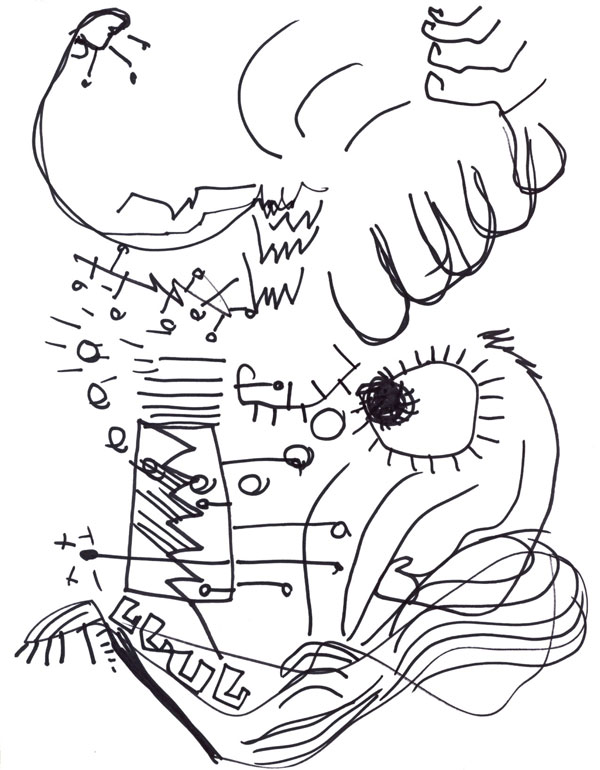
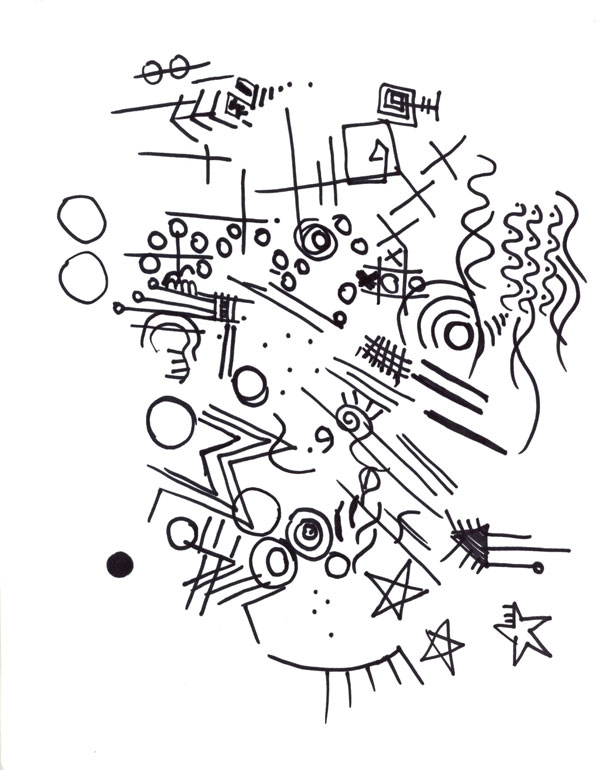

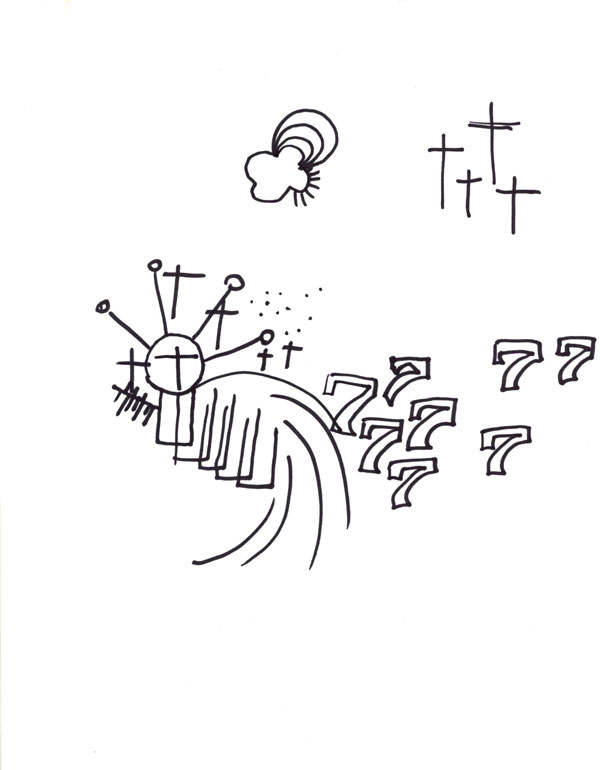
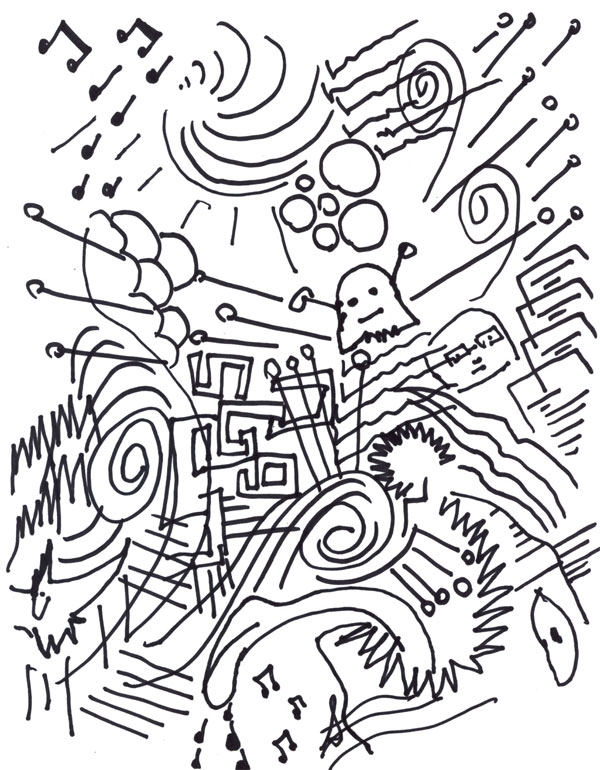
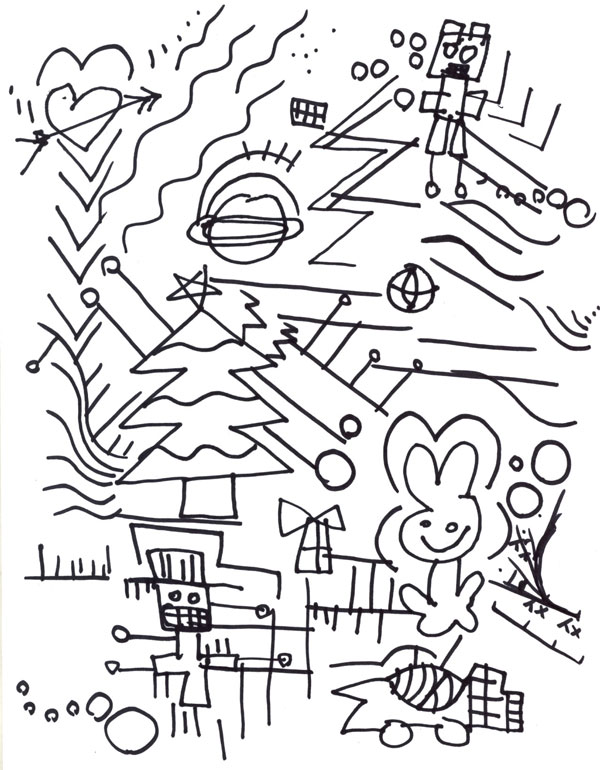
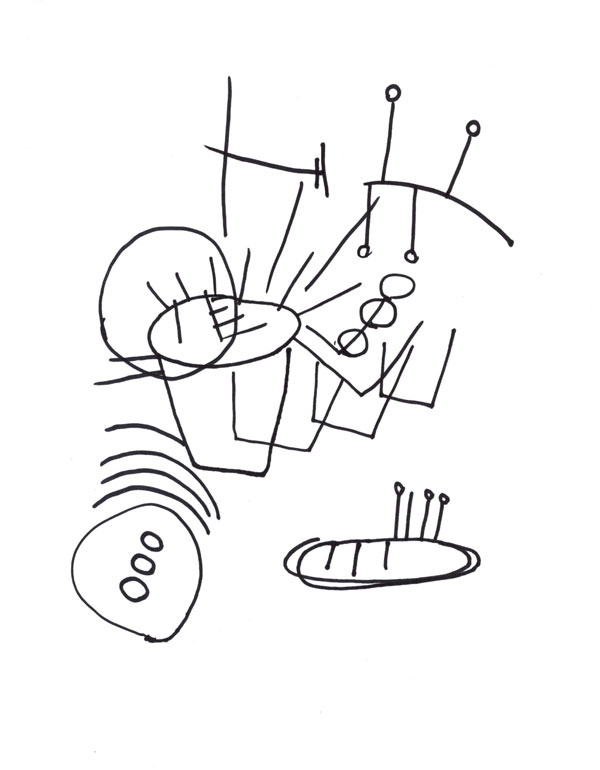
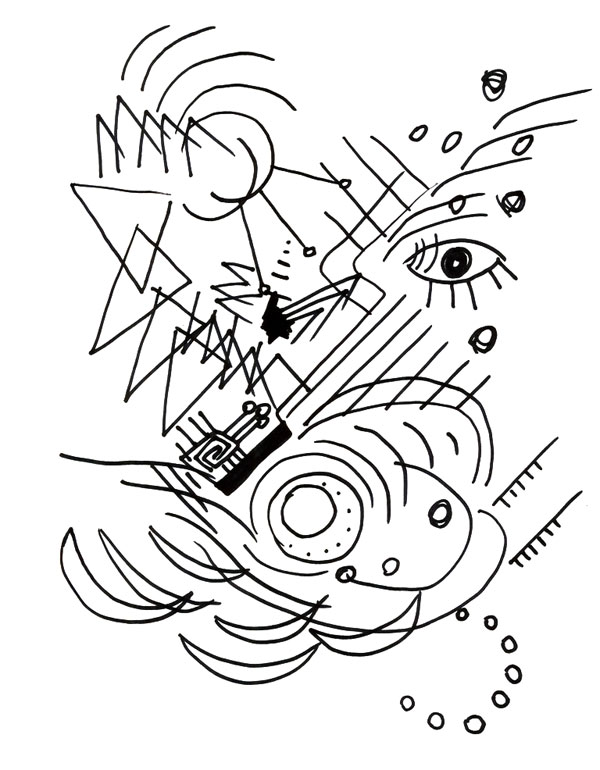
POSSIBLE SOLUTIONS ON DRAWING CAPTURE TECHNOLOGY:
- Solution A: Infrared light
The primary source of infrared radiation is heat or thermal radiation, any object has a temperature radiates in the infrared. Even objects that we think of as being very cold, such as an ice cube, emit infrared. When an object is not quite hot enough to radiate visible light, it will emit most of its energy in the infrared. For example, hot charcoal may not give off light but it does emit infrared radiation which we feel as heat. The warmer the object, the more infrared radiation it emits. Therefore having an infrared camera, I will be able to capture only the painter. It has been done in many major interactive shows such as Messa di Voce. I am not sure how well it does on capturing strokes.
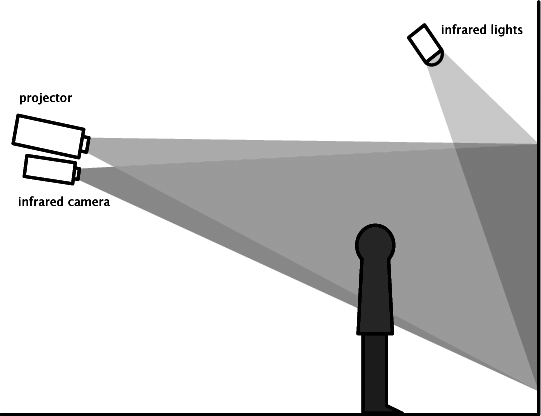
- Solution B: Digital Whiteboard (Electronic Whiteboard)
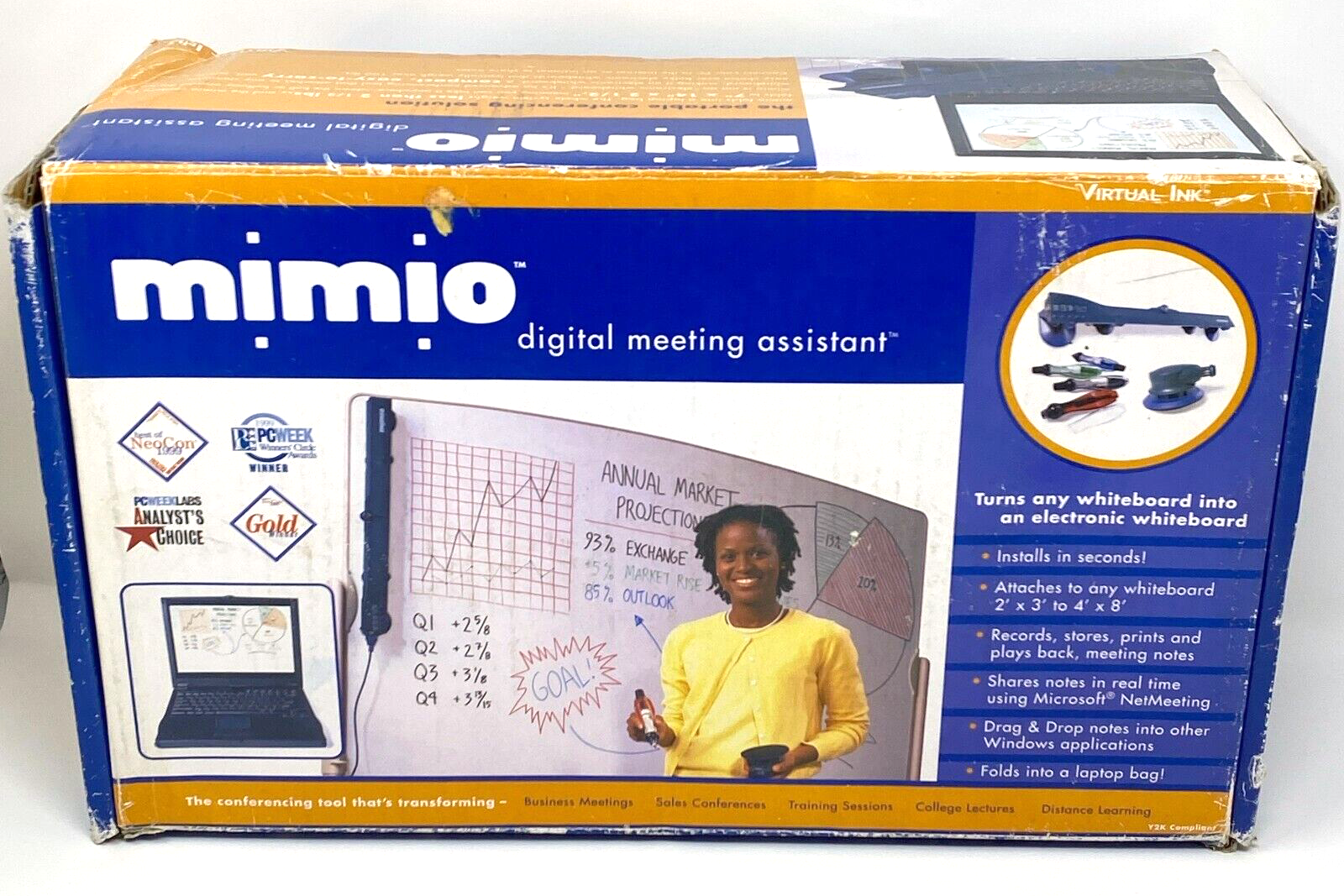
The digital whiteboard (or electronic whiteboard) is designed to allow interaction with a computer display on a real whiteboard. In order to interact with the real-time writing and drawing on the whiteboard, a digital whiteboard usually consist some type of position capturing of the specially made marker. The capturing device is either built in to the physical board or has a portable sensor bar that can be installed on the side of a real whiteboard. If the capturing device could output the positioning data to Flash/Processing or could make the marker works like a mouse, this might be the solution I am going for. Because the capturing area can cover up to at least 4’ by 8’ for most digital whiteboard kits. The downside is that they are luxury items, normally cost $500 and up.
- Solution D: WACOM Cintiq
When working with a WACOM Cintiq user works with the pen directly on a twenty one inch screen. There is little or no learning curve because of this natural “pen-on-paper” work approach. This is an easy solution to my project on the technology aspect, but I am expecting a larger and a real canvas for people to explore.
IMPLEMENTATION PROTOTYPE:

I am going to house the sensor in a wooden box and mount the box on the bottom of the canvas. The sensor will pick up the positioning data of the drawing pen and pass the data to the computer application. Then the computer application will generate the picture and project it on the canvas through a projector.

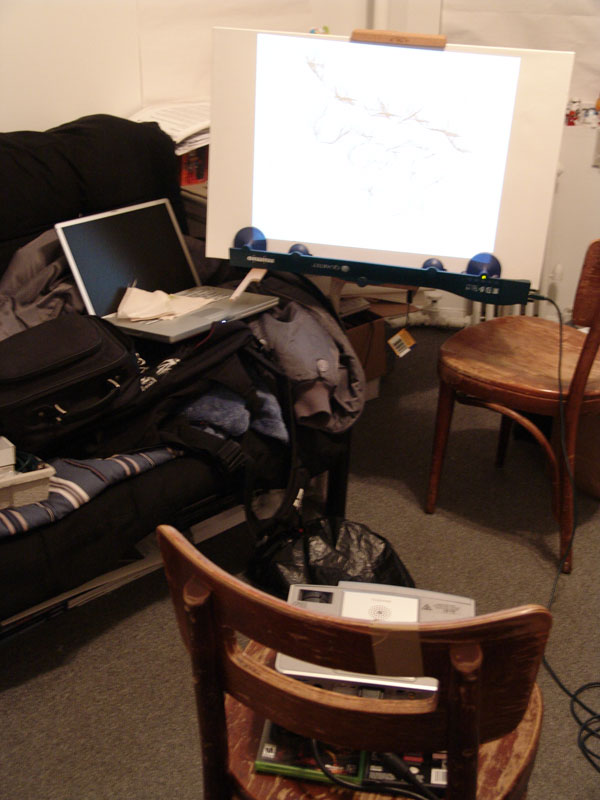
FINAL RESULTS:



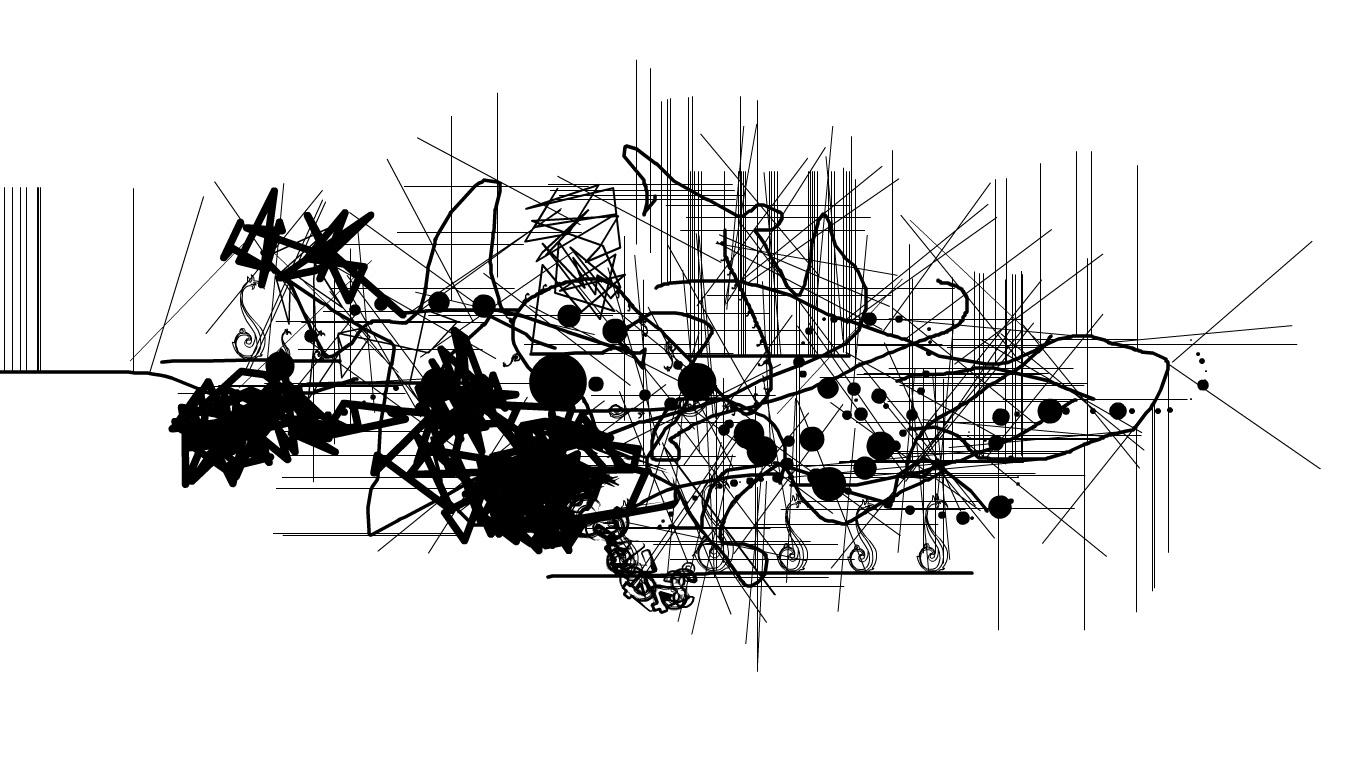
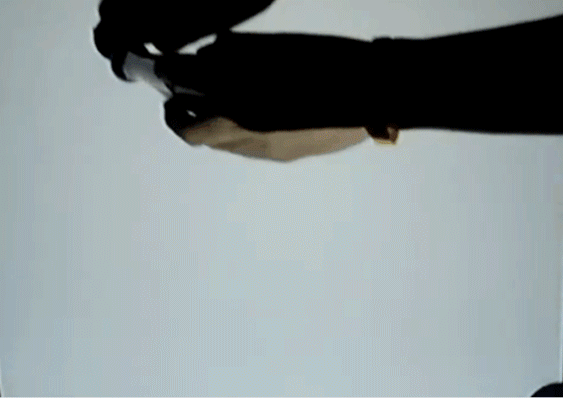
for Wii browser (link no longer works)